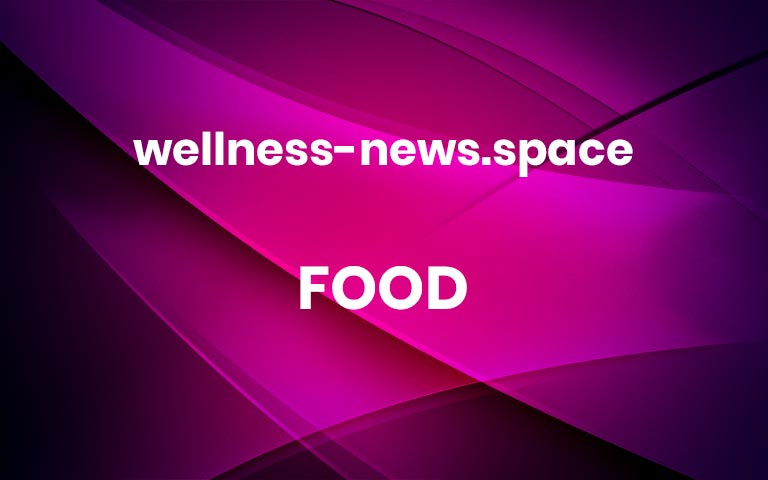Protein is essential for building and maintaining muscle. However, muscle isn’t just built after your workout is done. Consuming protein after your workout makes enzymes that allow key chemical reactions to take place within your body. These enzymes are crucial to regulating your body’s hormones, maintaining the fluid balance in your blood and tissues, and forming antibodies to protect your body from bacteria and viruses. Protein has many roles in your body, so it’s used constantly throughout the day. That’s why it’s important, not just for building muscle, but overall health to consume protein at every meal and in between—including high-protein snacks.
Protein requirements vary per individual and specific goals, but overall you should aim to consume between 1.2-2.0 grams per kg body weight per day. Yes, that’s more than the generic RDA of 0.8 grams per kg body weight, which we find too modest; it’s the minimum you need from getting sick.
High-protein snacks are key to getting your body the protein and amino acids in between meal periods—or if you’re going a few hours in between meals. A high-protein snack should provide at least 10 grams of protein per serving and be easy to eat at home or on the go. In addition, watch out for the added sugar content (keep it under 10 grams of added sugar) and make sure the ingredients are ones you’re familiar with. Take a look at these high-protein snacks (store-bought and homemade) to help you get protein all day long.
Best High-Protein Snacks to Eat Anytime, Anywhere
Joseph Gonzalez/Unsplash1. Hard Boiled Eggs
Eggs are one of the best cheap protein sources, with each average egg providing 6 to 7 grams of protein. They’re versatile; cook up a frittata, shakshuka, or omelette for breakfast. For on-the-go snacks, hard boil half a dozen at the start of the week and store in the fridge.
Protein per serving (2 eggs): 12 g protein
Flavor-filled meat sticks made from grass-fed and free-range beef, venison, and turkey. Chomps2. Chomps Meat Sticks
Chomps meat sticks are crafted with high-quality, sustainably sourced ingredients—including grass-fed beef and venison, as well as free-range, antibiotic-free turkey. With nine unique flavors like Italian-Style Beef and Pepperoni Seasoned Turkey, you’ll never get flavor fatigue. Plus they’re gluten-free, compatible with paleo, keto, and Whole30, and allergy-friendly.
Protein per serving (1 Pepperoni Seasoned Turkey Stick): 10 g protein
[From $14.99; chomps.com]
Get it
Kodiak Cakes Oatmeal Chocolate Chip Protein Balls Courtesy Image3. Kodiak Cakes Oatmeal Chocolate Chip Protein Balls
In the morning, mid-day, late night, in the car, or on the trail, these protein balls are an easy, delicious way to get protein. They’re made with 100 percent whole grain oats and non-GMO ingredients for wholesome, nutritious snacking. Bonus: They’re easy to prepare (just add water and roll!).
Protein per serving (2 balls): 20 g protein
[$5.50; kodiakcakes.com]
Get it
Simply Snackin Bars Courtesy Image4. Simply Snackin Bars
Simply Snackin make on-the-go protein snacks that are nourishing and simple. The bars only include real ingredients like grass-fed beef or chicken, free of antibiotics or added hormones. They’re void of gluten and artificial flavors or colors.
Protein per serving (1 Chicken With Hemp Seeds bar): 11 g protein
[From $36.80; simplysnackin.com]
Get it
Wonderful Pistachios Roasted & Salted No Shells Courtesy Image5. Pistachios
Pistachios are the ultimate plant-based protein source as they contain all essential amino acids in adequate amounts for optimal health. The best part is they’re convenient on the go and don’t require any preparation. Additionally, they provide fiber, antioxidants, vitamins, minerals, and healthy fats to help your body refuel and recover before and after a workout
Protein per serving (1.5 oz kernels): 10 g protein
[From $5.99; amazon.com]
Get it
Scout Wild Albacore Tuna SCOUT6. Scout Wild Albacore Tuna
Tuna is an excellent source of protein and these single-serve cans make it easy to store and travel with (just remember your can opener!). They feature hand-cut tuna fillets that are cooked and packaged to preserve omega-3 oils with nothing else added. The best part? In addition to protein, each 3-oz serving provides roughly 705 mg of healthy EPA and DHA Omega-3 fatty acids.
Protein per serving (1 can): 21 g protein
[$31.99/4 pk or $28.79/monthly subscription; enjoyscout.com]
Get it
Kize Bars Kize Concepts7. Kize Bars
Kize Bars might be the cleanest protein bars you can buy. They taste more like a no-bake cookie or peanut butter fudge, and some flavors have as little as four ingredients. Great as a high-protein snack, on-the-go fuel, or a healthy dessert.
Protein per serving (1 bar) 10 g protein
[From $29.99; kizeconcepts.com]
Food Collection / Shutterstock
8. Real California Cottage Cheese
Cottage cheese is an excellent source of protein and contains relatively few calories. It also provides an ideal combination of whey and casein. which provide quick- and slow-digesting protein. It’s packed with many other nutrients for health like B vitamins, calcium, phosphorus, and selenium. It’s also versatile enough to incorporate into different meals and snacks.
Protein per serving (1 cup low-fat): 28 g protein
[realcaliforniamilk.com]
Get it
Vital Farms Pasture-Raised Egg Bites, Uncured Bacon and Cheddar Cheese Vital Farms9. Vital Farms Pasture-Raised Egg Bites, Uncured Bacon & Cheddar Cheese
Eggs are a great protein source (as we already mentioned) but sometimes you want to make them a little more exciting. Vital Farms Egg Bites are made with ethically sourced ingredients like pasture-raised eggs and cheese, and humanely raised meats. On top of that, they’re delicious and come in convenient packs to microwave and take with you anywhere in just 45 seconds.
Protein per serving (2 bites): 18 g protein
[vitalfarms.com]
Get it
Fage Total Greek Yogurt 0% Courtesy Image10. Fage Total Greek Yogurt
Greek yogurt is a little different than its traditional counterparts. Greek yogurt is lower in sugar, higher in protein, and creamier than regular yogurt. It’s filled with not just protein but calcium, probiotics, and vitamin B. It often comes in single-serving portions, making it a great high-protein snack in between meals. You can also add to your favorite smoothie.
Protein per serving (Fage Total 0% 6-oz container): 18 grams protein
[$1.29; usa.fage]
Purely Elizabeth Blueberry Walnut Collagen Protein Oats Courtesy Image11. Purely Elizabeth Blueberry Walnut Collagen Protein Oats
Oatmeal is a breakfast favorite for its convenience and fiber content. Purely Elizabeth makes it even better by adding premium grass-fed bovine collagen and an added packet of Nuttzo nut butter to pack a high-protein punch. The blueberries, walnuts, ancient grains, and superfood seeds lend satisfying texture and flavor to boot.
Protein per serving (2-oz cup): 11 g protein
[$2.99 or $2.54 for subscription; purelyelizabeth.com]
Get it
Kite Hill Protein Yogurt Kite Hill12. Kite Hill Protein Yogurt
Kit Hill yogurt is a great-tasting blend of almonds and soy to pack in the protein and faba bean for added creaminess in a new plant-based yogurt. Kite Hill Protein Yogurt is non-GMO, gluten-free, vegan and contains no artificial flavors or preservatives. Best of all, it doesn’t sacrifice on taste or the smooth, creamy texture that many seek, but cannot find in dairy-free items.
Protein per serving (Blueberry, 5.3-oz cup): 10 g protein
[$2.39; kite-hill.com]
Get it
Nature Zen/Unsplash13. DIY Protein Shake
There’s nothing easier than bringing your own protein powder (whey or vegan) and mixing in your shaker bottle. But if you have the time, make a complete and delicious post-workout smoothie to kickstart recovery or provide an extra boost of protein between meals. Here’s a recipe with a tropical spin:
Ingredients
16 oz milk of choice (or orange juice)
1-2 scoop vanilla or unflavored protein powder (whey or vegan)
3/4 cup frozen pineapple chunks
½ cup frozen mango
½ frozen banana
1/2 ripe avocado peeled
1 tsp chia seeds
1 scoop Athletic Greens powder
Instructions
Combine all ingredients
Blend until smooth.
Jordan Mazur, MS, RD is the director of nutrition for the San Francisco 49ers.
For access to exclusive gear videos, celebrity interviews, and more, subscribe on YouTube! More



